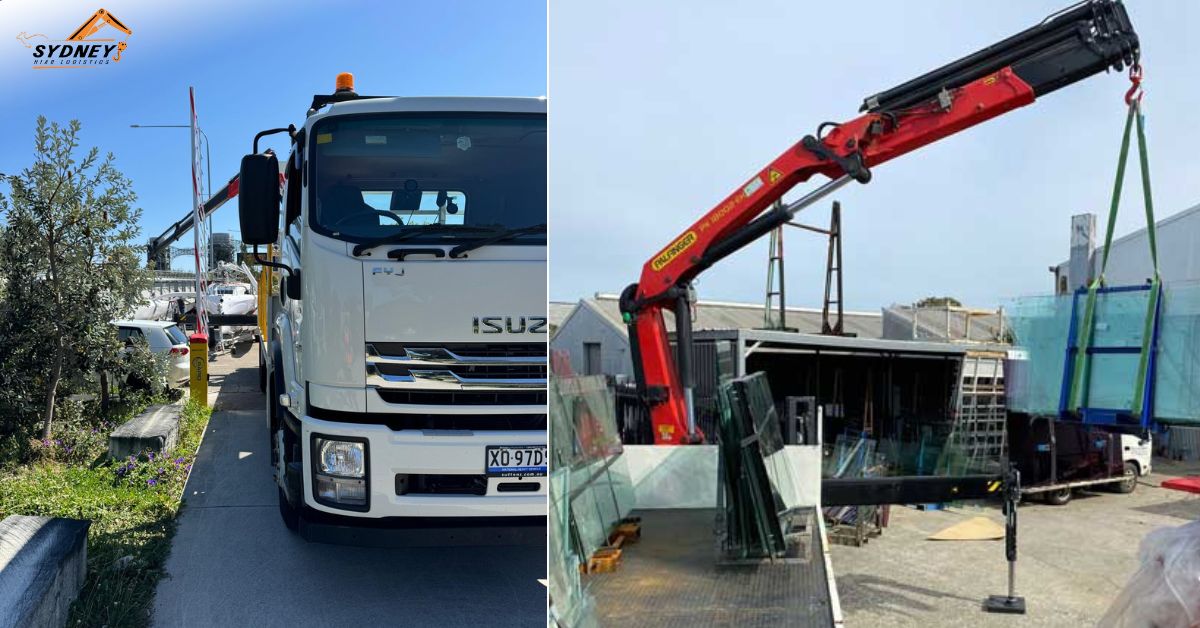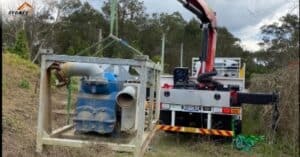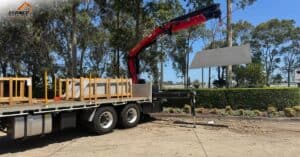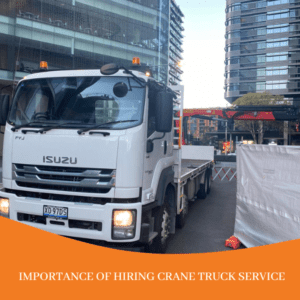When it comes to lifting and transporting heavy materials on construction sites, choosing the right type of crane is essential for the efficiency and safety of your project. Two commonly used types of cranes in the construction and logistics industry are HIAB cranes and tower cranes. Both have their own strengths and are suited for different types of projects, but which one is the better choice for your Sydney-based construction or logistics project? Let’s explore the differences between these two crane types and help you determine which is most appropriate for your needs.
What is a HIAB Crane?
HIAB cranes, also known as truck-mounted cranes, are versatile lifting machines that are typically mounted on the back of a truck. They are equipped with hydraulic cranes that allow them to lift, move, and place heavy materials like building supplies, equipment, or machinery with precision. HIAB cranes are widely used for various transportation and construction tasks, such as moving windows, doors, concrete, and steel beams. Because they are mounted on trucks, they are mobile and capable of providing quick, on-the-spot lifting without the need for additional equipment or setup.
What is a Tower Crane?
Tower cranes, on the other hand, are stationary cranes that are used for large-scale construction projects, particularly for high-rise buildings. They are often seen on construction sites in urban areas and are designed to lift and transport heavy materials such as steel, concrete, and construction supplies to great heights. Tower cranes have a fixed position and are typically assembled on-site, standing tall above the project, and are connected to a base. Their long reach and vertical lifting capabilities make them ideal for large-scale projects that involve lifting heavy materials to higher floors or multiple stories.
Key Differences Between HIAB Cranes vs Tower Cranes
1. Mobility vs. Stability
One of the primary differences between HIAB and tower cranes is mobility. HIAB cranes are mounted on trucks, which allows them to be easily moved from one location to another, offering flexibility and adaptability for various projects. Whether you need to deliver materials to a construction site or transport heavy machinery, a HIAB crane can be driven to the required location, set up quickly, and start working immediately.
Tower cranes, however, are stationary and require significant setup and assembly. They are designed for long-term use on large-scale construction projects, and while they are incredibly stable and capable of lifting heavy loads to great heights, they are not mobile. This makes tower cranes ideal for large, ongoing projects where the crane will be required for months or even years.
2. Lifting Capacity and Reach
When it comes to lifting capacity, tower cranes generally have a higher lifting capacity and reach compared to HIAB cranes. Tower cranes can lift extremely heavy loads, often several tons, and are equipped with long boom arms that extend far into the sky, making them ideal for tall building construction or projects that require lifting materials to significant heights.
HIAB cranes, while highly versatile and powerful, generally have a lower lifting capacity and reach compared to tower cranes. They are best suited for lifting materials at ground level or to lower floors of a building. HIAB cranes can handle moderate loads of a few tons, but they are not designed to lift materials hundreds of feet into the air like tower cranes.
3. Setup Time & Site Requirements
Another important factor to consider is the setup time and site requirements. HIAB cranes are extremely quick and easy to set up because they are already mounted on trucks. All that is required is to drive the truck to the location and position it appropriately, making HIAB cranes ideal for projects that need flexibility and quick deployment. They also have the advantage of not requiring much space for setup, as they don’t need to be assembled on-site.
Tower cranes, on the other hand, require extensive setup and a large amount of space for assembly. They are typically erected by specialised teams and can take several days or even weeks to set up, depending on the size of the crane and the complexity of the site. Tower cranes also require a solid foundation or base to ensure they are stable during operation, which means they are best suited for long-term, large-scale projects where they will remain in place for an extended period.
4. Project Type and Application
HIAB cranes are better suited for projects that require mobility and flexibility. For example, if you need to move materials around a construction site, deliver windows and doors, or transport equipment from one location to another, HIAB cranes are an excellent choice. They are also useful for small to medium-sized projects, such as residential construction, roadwork, and infrastructure projects. HIAB cranes are a practical solution for logistics operations where quick and efficient lifting is needed without the complexity of setting up large stationary cranes.
Tower cranes, however, are ideal for large-scale construction projects, particularly in urban environments where the height and reach of a crane are required for high-rise buildings. Tower cranes excel in lifting and placing materials to great heights and are often used in large commercial, residential, and industrial projects. If your project involves multi-story buildings, complex structural work, or high-volume material handling over long periods of time, a tower crane is typically the better choice.
5. Cost Efficiency
Cost is always a major consideration when selecting machinery for a project. In terms of initial cost, HIAB cranes are typically more affordable than tower cranes. The flexibility and mobility of a HIAB crane also mean you can use it for a variety of tasks, potentially reducing the need for additional equipment. This makes HIAB cranes a more cost-effective option for smaller projects or those with a limited budget.
Tower cranes, due to their size, complexity, and installation requirements, tend to be more expensive to hire and operate. However, for large-scale projects, the ability of a tower crane to lift heavy materials to great heights and remain stationary for extended periods may justify the higher cost.
Which Crane is Right for Your Sydney Project?
Choosing between a HIAB crane and a tower crane depends largely on the specific needs of your project. Here’s a quick guide:
- For smaller-scale, flexible, and more localised lifting tasks, such as delivering materials or lifting moderately heavy loads at lower heights, a HIAB crane is likely the better option. It’s cost-effective, mobile, and easy to set up, making it ideal for short-term projects or logistics operations.
- For large-scale, long-term construction projects where materials need to be lifted to significant heights or over long distances, a tower crane is the preferred choice. It’s more powerful, has a greater reach, and is ideal for projects like skyscrapers or multi-story buildings.
Conclusion
Ultimately, the choice between a HIAB crane and a tower crane comes down to the specific requirements of your Sydney-based project. Both types of cranes serve vital roles in construction and logistics, but understanding the advantages and limitations of each will help you make an informed decision. If you’re unsure about which crane to hire for your project, consulting with a professional crane hire company like Sydney Hiab Logistics can provide you with the guidance and expertise you need to select the right equipment for your job.




